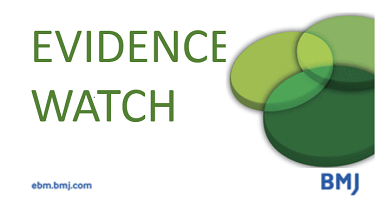SSRIs might have higher rates of fracture than tricyclic antidepressants but lower mortality and adverse reactions.
Carl Heneghan
 Antidepressants are commonly prescribed. Yet, in those under 65, there is scant evidence on the risks associated with their use. A recent publication in BMC looked at these risks in a cohort of 20 to 64-year olds.
Antidepressants are commonly prescribed. Yet, in those under 65, there is scant evidence on the risks associated with their use. A recent publication in BMC looked at these risks in a cohort of 20 to 64-year olds.
What did they find?
The researchers retrospectively analysed 238,963 patients with a first diagnosis of depression registered with UK general practices. After 5 years of follow-up, they found the rate of fracture was 30% higher for selective serotonin reuptake inhibitors and 28% higher for other antidepressants (Mirtazapine and Venlafaxine) compared with the time periods when antidepressants were not used. At one year, the excess risk of fracture associated with SSRIs was 20 per 10,000 compared to those treated with tricyclic antidepressants, and 27 per 10,000 higher for the other antidepressants compared to tricyclics.
Adverse drug reactions were 54% higher for tricyclic and related antidepressants and 61% higher for the other antidepressants compared with SSRIs. Trazodone was found to be associated with an increased risk of upper gastrointestinal bleeding.
All-cause mortality rates were higher for tricyclic and related antidepressants and for the other antidepressants compared to SSRIs. Mirtazapine was associated with as more than doubling of mortality rates when compared with periods of non-use and was associated with an excess of 23 deaths per 10,000 compared with those treated with citalopram.
How secure is this information?
Now it goes without saying that cohort studies cannot infer causation. Those that are the most unwell, often receive the treatments which then seemingly cause the most harm. To account for this the researchers analysed a large number of potential confounding variables, however, this does not account for residual confounding. In addition, the number of falls and deaths was small, further hindering the interpretation. Finally, misclassification bias (we have written about this in the catalogue of bias) occurs when a study participant is categorised into an incorrect category. In this case, individual may not have actually taken their medications despite being prescribed them, thus altering the observed association.
What can we conclude?
It is worth noting the shortcomings of observational data but this is still helpful information that should be considered in terms of when, and when not, to prescribe antidepressants. The issue with some of these drugs and their harms are worth further investigation.
Reference
Coupland C., Hill T., Morriss R., Moore M., Arthur A., & Hippisley-Cox J. (2018). Antidepressant use and risk of adverse outcomes in people aged 20-64 years: Cohort study using a primary care database. BMC Medicine, 16(1), 36.

BMJ Evidence-Based Medicine – original evidence-based research, insights and opinions on what matters for health care.
Carl Heneghan is Professor of EBM at the University of Oxford, Director of CEBM and Editor in Chief of BMJ Evidence-Based Medicine
Follow on twitter @carlheneghan
Competing interests
Carl has received expenses and fees for his media work including BBC Inside Health. He holds grant funding from the NIHR, the NIHR School of Primary Care Research, The NIHR Oxford BRC and the WHO. He has also received income from the publication of a series of toolkit books. CEBM jointly runs the EvidenceLive Conference with the BMJ and the Overdiagnosis Conference with some international partners which are based on a non-profit model.